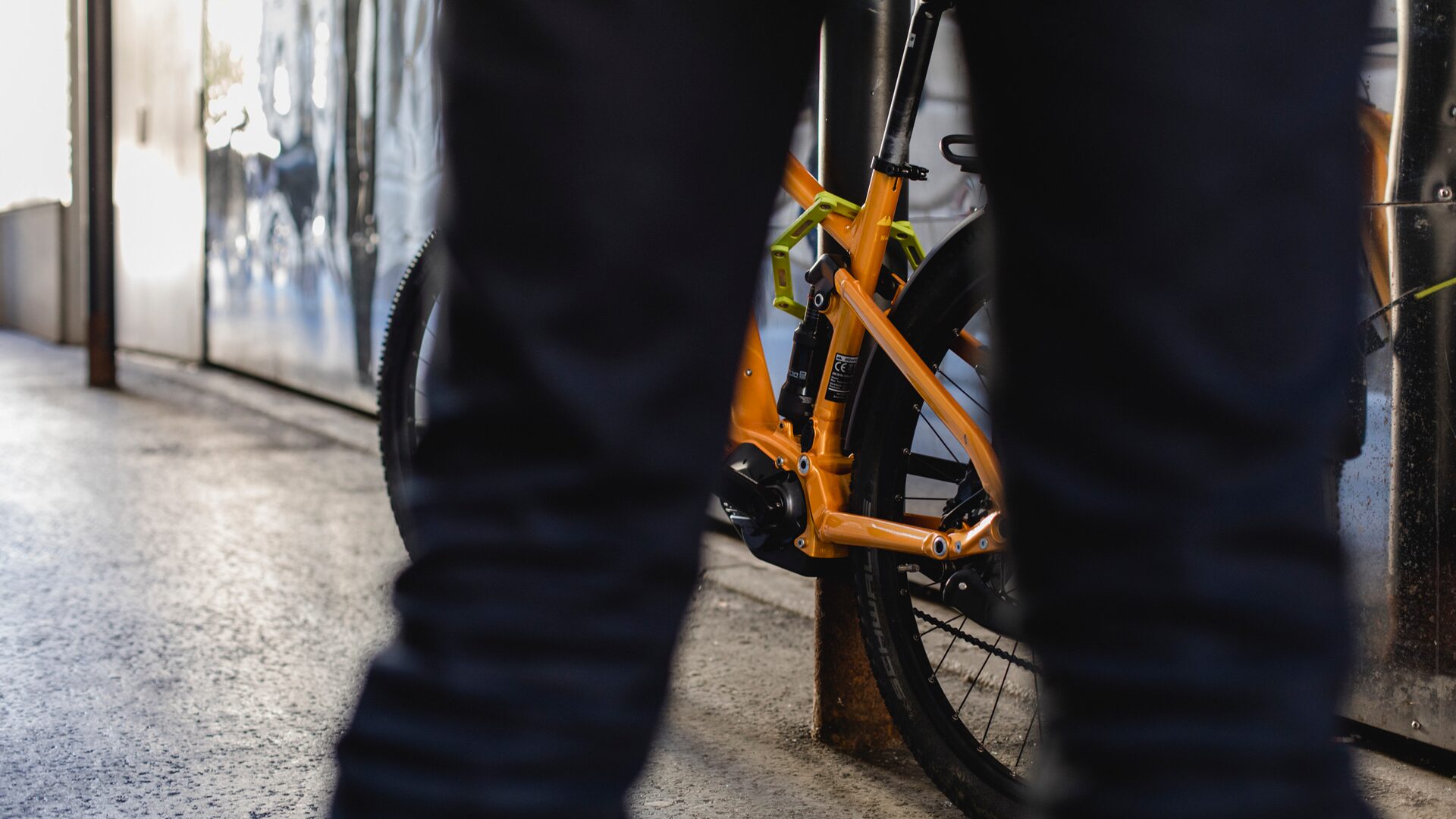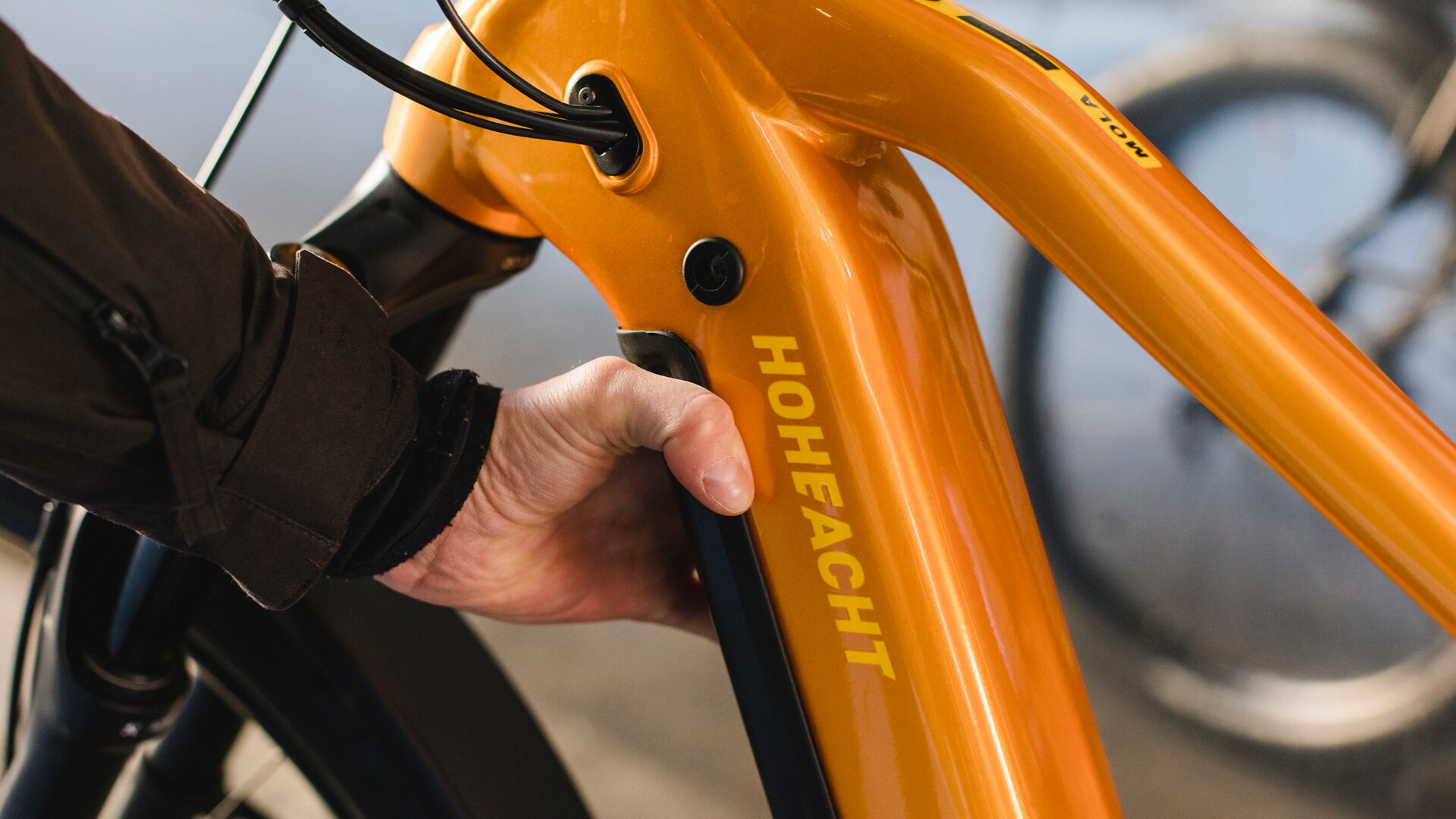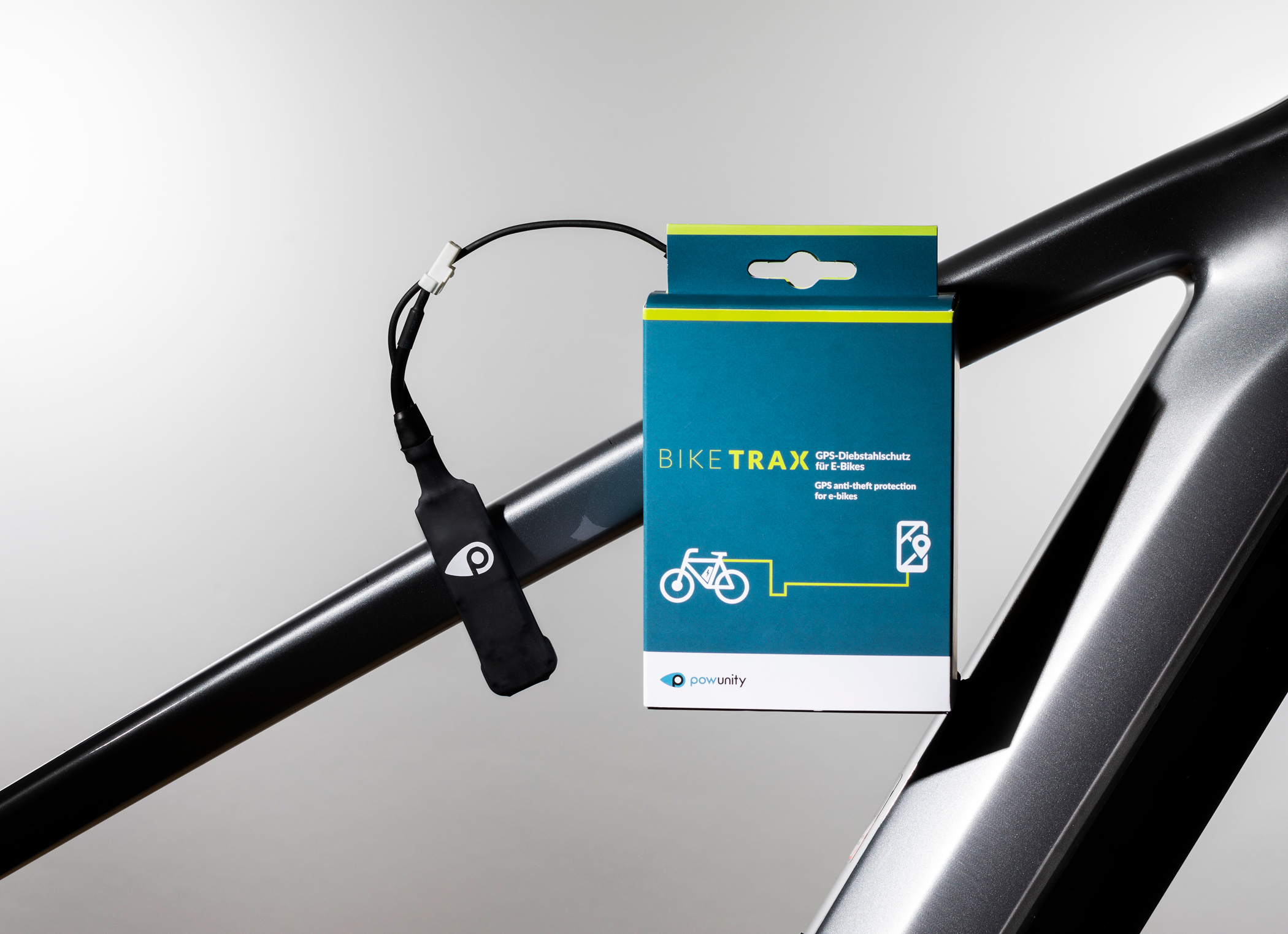- Free shipping from 220€The order of accessories (without BikeTrax) is excluded from the free shipping costs.
PowUnity explains, Top, Topics
Winterize e-bike: special maintenance tips for e-bikes in winter
Inhalt
About electric bikes in winter in a nutshell:
- An e-bike is not a fair-weather vehicle. It is also suitable for travelling in snow and sub-zero temperatures. However, electric bikes need more care in winter, especially the battery.
- Cold increases the electrical resistance. This reduces the performance and range of batteries. You can prevent this by inserting the battery shortly before setting off, starting slowly and later riding at a high speed. Also remember to look after and maintain your bike regularly.
- If you prefer not to ride in winter, store your e-bike in a protected, dry and clean place. Outdoors, we recommend a good tarpaulin.
- To ensure that your bike is protected from thieves even when it is parked for long periods in winter, you can get a battery extension for the PowUnity GPS tracker BikeTrax.
Winter riding through white winter landscapes and icy roads in a wonderfully relaxed manner can be great. The motor helps you to overcome small snowdrifts and other weather-related obstacles. However, e-bikes are not completely unaffected by extreme temperatures, snow and ice. The battery in particular needs more attention than usual.
Maintaining the e-bike battery in winter
Cold and batteries are not a good combination. A modern lithium-ion battery is robust. Nevertheless, you should treat it differently in winter than in the warmer months to avoid any unpleasant surprises.
Why battery performance decreases in cold weather
Lithium ion batteries feel really comfortable in a temperature controlled environment, i.g. temperatures between around 5 and 30 degrees. If it is colder, the following problems occur:
-
The electrical resistance increases.
- Performance and range decrease.
The lower the temperatures, the greater the impact. However, the cold does less harm as long as the battery is working. This is because heat is generated. The situation is different if your battery is exposed to low temperatures for a long period of time.
How to treat the battery correctly
If you are into winter riding, follow these tips keep the battery’s performance:
- If possible, remove your battery when you park your e-bike and store the battery inside. This is particularly important if the bike is parked outside or in a draughty bike cellar.
- Store the e-bike battery in a heated room. The ideal storage temperature is around 10 to 20 degrees. Make sure that the location is dry and protected from dust.
- Reattach it just before you set off and ride off slowly so that the battery can acclimatise to the winter temperatures.
- You can accelerate after about 20 minutes. Then ride at a higher assistance level to keep the battery warm.
- Take your charger and/or a spare battery with you on longer journeys. This way you are always on the safe side.
-
Avoid leaving the e-bike outside for long periods of time. If this is not possible, protect your battery from the cold with a thermal protective cover.
E-bike batteries are expensive. That’s why they are sought after by thieves all year round. You can find out how to protect your battery from theft in our article “E-bike battery theft protection”.
E-bike batteries are expensive. That’s why they are sought after by thieves all year round. You can find out how to protect your battery from theft in our article “E-bike battery theft protection”.
Charging the battery
Even if you follow all of our tips, you may need to charge your e-bike battery more often than usual in winter. It’s best to do this at room temperature. However, give it time to warm up after a tour.
If you run out of juice in between, there are tips and apps in the article on “Finding e-bike charging stations” to help you get back to power.
Safety tips against wear and tear in winter
Other components of e-bikes are also sensitive to cold and snow. Brake and gear lines or chains, for example, suffer from dirt and road salt. The result: rust builds up.
We recommend that you do this:
- Clean your bike regularly in winter. Pay particular attention to the chain and the brake pads.
- Use professional cleaning agents.
- Take your e-bike to a local bike shop for maintenance or a service check at regular intervals.
- Clean the electronic contacts of the e-bike and battery from time to time
- Make sure your front and rear lights work properly, especially when you ride in short winter days.
- In the winter months, store your battery or even better the whole bike in a sheltered place that is as warm as possible. Outdoors, you can cover it with a tarpaulin. We’ll come back to this later.
A tip in passing: For people who regularly ride their e-bike in winter, it may be worth changing the tires or using studded tires. Winter tires are characterized by an extra portion of grip in snow and ice and reduce the braking distance.
Your GPS tracker will also last longer in winter
Your e-bike motor may not be the only component of your pedelec that draws power from a battery. If you want to optimally protect your bike from thieves, use a GPS tracker.
For the PowUnity GPS tracker BikeTrax, you always get an additional battery that lasts up to three weeks if your e-bike is stationary and you have removed the e-bike battery. We also recommend our battery extension for the winter. This protects your bike against theft for longer periods of time.
Sending e-bikes into winter hibernation
Riding an e-bike in winter is not your thing? Then give your electric bike a break. Ideally, you should store the pedelec and battery separately. Make sure both are stored in a protected, dry and clean place. Clean and maintain the bike before you park it. Some e-bikes also have a special battery management system. By pressing the button on the charger, it will charge up (or discharge) the battery to 60% and the management system will automatically place it into hibernation mode, which protects the battery when not in use for some time.
Important: Keep an eye on theft protection. Professional thieves are not deterred by a locked bike cellar or a lock alone. We have collected the best methods for protecting an e-bike from theft in the article “E-bike theft protection: 7 expert tips”.
What if the e-bike stays outside?
Not every biker has a cellar or garage to store his electric bike. It may therefore be necessary to park the bike outside. No problem, as long as it is parked on a dry surface and you cover it with a suitable tarpaulin.
What makes a suitable tarpaulin? Above all, the following properties:
- This is not just any tarpaulin, but a special bicycle cover.
- It is robust, waterproof and thick.
- UV protection prevents tears and increases its service life.
- The dimensions are sufficient for your e-bike. There are also covers on the market that are suitable for two bikes.
- The cover is easy to attach and simple to clean.
You can get tarpaulins for bike covers for around ten euros. However, we recommend investing more. This way, your bike is really protected and you are equipped for several winters. You can also use the tarpaulin in the rain.
Conclusion: Winterizing an electric bike is not rocket science
Thanks to the motor assistance, a pedelec is often more fun to ride in winter than a conventional bike. It is important that you take a few simple measures to protect the bike from damage. Above all, this means minimising exposure of the battery to the cold when it is not working but rather keep it in an ambient temperature. If you then take regular care of other sensitive bike parts, you can ride in almost any weather with a clear conscience.
Of course, you don’t have to. If you have decided against using it and in favour of winter storage, make sure you have a suitable place to store it. Remove the battery if possible, cover the electric bike with a tarpaulin and make sure that your GPS tracker remains functional. Then it’s just a case of waiting for spring and better weather.
FAQ on winterising your e-bike
How do I protect my e-bike battery in cold temperatures?
In cold temperatures, your e-bike battery should be stored and charged at room temperature. Extreme cold can impair its performance and service life. Store it in a dry, cool place. If you want to ride your e-bike, attach the battery to the bike shortly before setting off. Ride off slowly. After about 20 minutes, it is good to ride at high power and avoid longer breaks. This keeps the battery warm.
How can I prevent rust forming on my e-bike in winter?
To prevent rust from forming, clean your e-bike regularly and keep it dry. It is particularly important to remove salt residues that are used on the roads in winter immediately. An additional protective layer of special lubricant can also help.
Are there any special maintenance tips for e-bikes in winter?
Pay particular attention to the lubrication of moving parts in cold, snowy and icy conditions. Clean and lubricate them regularly. Also check the brakes and gears, as these can be affected by wet and cold conditions. We recommend checking the e-bike for damage or wear after every ride. A regular inspection in a workshop rounds off the maintenance programme.
Share article!





 Deutsch
Deutsch